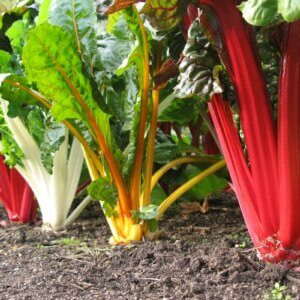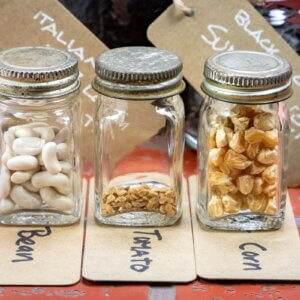Table of Contents
Some flowers are compostable, but others should be disposed of elsewhere to prevent a possible spread of disease, toxins, pests, and poisons in the compost pile. When composting, use healthy flowers free from chemical treatments.
Flowers are excellent sources of either carbon or nitrogen, depending on their state.

Methods suitable to handle flower wastes include cold composting, hot composting, and vermicomposting. Although you can still incorporate pieces of flowers in a Bokashi system, they would contribute small amounts of nutrients to the fermenting microbes.
And landfills should be the last place fresh flowers end up when you can display waxed flowers in a vase, or hang pressed flowers on the wall to beautify a space.
Learn valuable tips and tricks when composting flowers and explore diverse options for the sustainable use of flowers below.
How to Compost Flowers
Flowers make lovely gifts for many of life’s occasions. However, a bouquet of flowers, such as those given on Valentine’s Day, will eventually wither and lose its beauty and fragrance. Rather than discarding the flowers and contributing to landfill waste and carbon footprint, consider composting them with other organic wastes.
Fresh flowers contain nitrogen that is beneficial for composting organisms. Hand dried or dead flowers should be treated as carbon-rich brown ingredients.
Preparing Flowers for Composting
General composting guidelines can be applied when composting flowers.
Collect your flowers and inspect for any nonbiodegradable components. Remove ribbons, tags, and wiring that will not break down with the rest of the organic matter.
Ensure the compostable flowers are disease- and pest-free to maintain a healthy compost. Certain bacteria, pathogens, and critters can survive the composting process and contaminate your vegetable garden or flower bed once the resulting compost is applied.
Some commercial flowers are treated with chemical-based biocide or synthetic preservatives. Chemical residues from these store-bought flowers can leak into your compost, harm beneficial microorganisms, and impede proper decomposition.
Garden flowers treated with homemade and organic preservatives (such as lemon and sugar) are more suitable for composting.
Be aware — bulbs and rhizomes from spring-blooming flowers such as hyacinths and tulips, can take two years to decompose in well-managed piles. If you would still like to add the flower bulbs and rhizomes, shred them first to accelerate decomposition. New plants are likely to grow in your compost out of whole bulbs.
Thorny stems from roses can be a safety hazard. Since they take time to decompose, the thorns remain in the compost and may pierce your skin when the compost is dug, touched, or stepped on. Cut thorny stems into small pieces to speed up their decomposition, and use a pair of gloves before touching your compost.
Shred or chop your flowers — including the petals and stems — before incorporating them in your compost bin or pile. As discussed earlier, fresh flowers should be treated as nitrogen-rich green compost materials, while dried flowers should be considered carbon-rich brown materials.
With this in mind, mix your chopped flowers with other organic materials and aim for the optimal compost conditions.
Optimal Composting Conditions for Flowers
When layering compost materials, follow the ideal carbon to nitrogen ratio of 30 parts carbon to every 1 part of nitrogen. Carbon materials like dead leaves, shredded cardboard, newspaper, egg carton, untreated sawdust, and wood chips serve as an energy source for composting microorganisms. Nitrogen materials like fruit scraps and vegetable trimmings boost the development and growth of the pile’s microorganisms.
A balanced mix of these materials increases the efficiency and microbial activity of your compost bin or pile.
Monitor the pile’s moisture levels to avoid anaerobic decomposition. Keep your compost wet, but not flooded. If a compost pile isn’t turned frequently, excess water can create anaerobic conditions leading to unpleasant smells. You can counter this by adding dry carbon materials to absorb the excess moisture. Frequently turn your compost pile to improve air flow and allow oxygen to reach cramped areas in the pile.
Continuous microbial activity will heat up compost. Hot piles should have temperatures anywhere between 90 and 140 degrees Fahrenheit. Use a backyard pitchfork or shovel to turn your compost pile for better aeration. An outdoor thermometer may also be handy to check the pile’s internal temperature.
For the best compost quality, maintain these conditions.
How Long Do Flowers Take to Compost?
In a well-managed compost pile, flowers take less than 6 to 12 months to completely break down into finished compost. The rate of decomposition for organic materials and the efficiency of your compost pile depends on the availability of air, heat, and moisture.
How Flowers Affect the Composting Process
As an organic matter, flowers can positively influence your composting activity, encouraging valuable microbial activity.
Impact on Decomposition
In a well-managed compost pile, the softer parts of flowers, particularly petals and sepals, decompose easily. Fibrous parts like stems (particularly woody ones), bulbs, and rhizomes from flowering plants take longer to break down. You can speed up their decomposition by chopping or shredding them into smaller pieces.
Nitrogen from fresh flowers and carbon from dead flowers are essential to produce a conducive environment for microbial development and activity.
Microbial Activity
The 30:1 ratio of carbon- and nitrogen-rich materials stimulates healthy microbial activity within your compost heap. Flowers can provide both elements — depending on their state.
To protect beneficial microorganisms from hazardous toxins, avoid using chemically treated flowers and do not include any nonbiodegradable materials.
Temperature and Moisture
If you have a hot pile, aim for a temperature range of 90 to 140 degrees Fahrenheit. Sustained microbial activity in your flower compost usually raises its internal temperature. This range can break down organic wastes faster.
Inclusion of flowers can further aid your compost’s microbial activity.
On the one hand, flowers add minimal moisture. On the other, only add water when necessary. Avoid overflowing the pile with liquids to prevent anaerobic decomposition.
Potential Issues With Composting Flowers
Potential issues in flowers include vermin introduction from pest-infested flowers, and disease contamination from infected flowers. These issues can be easily minimized with proper preparation of flowers.
Other composting problems during decomposition like attraction of other pests and rancid odors, do not usually come from flowers alone.
Will Composting Flowers Attract Pests?
Composting healthy flowers does not usually attract pests. Flowers that were initially infested with pests, however, should be handled with care. The existing pests can resist the composting process.
Infested flowers should be disposed of elsewhere — preferably away from your plants or garden — to avoid accidental spreads.
Will Composting Flowers Cause Odors?
Under normal conditions, flowers do not produce foul smells.
Excess moisture and lack of oxygen can incite anaerobic decomposition of the organic matter, which consequently triggers unpleasant smells. To avoid this issue, always adhere to the ideal compost conditions and best compost management practices.
Methods for Composting Flowers
Most composting methods are suitable for flowers. Whether you opt for a traditional home compost heap — hot or cold — or build a vermicompost system, flowers will contribute essential nutrients to the finished compost.
Hot Composting
Hot piles can efficiently convert flowers into nutritious compost. This method involves composting microorganisms, their sustained activity, and consequent heat in breaking down organic wastes faster. Oxygen and a good mix of carbon- and nitrogen-rich compost materials are crucial to the success of hot composting.
Among other techniques, hot composting yields finish compost faster but may not be for everyone. Some first-time composters find hot piles challenging to maintain. Regular temperature checks and frequent turning are necessary to ensure the best compost quality with this method.
To start hot composting, cut or shred your compostable flower scraps and mix them with other organic materials. Stick to a 30:1 carbon to nitrogen ratio. Layer these materials into your bin or pile, aiming for a temperature range of 90 to 140 degrees Fahrenheit.
Cold Composting
For composters who seek an effortless method, cold composting might be the answer.
Flowers and other organic wastes will decompose with nature’s help. Microbes, insects, and other environmental elements will kickstart the decomposition of your flowers. With minimal to no human intervention, a cold pile takes significant time to process compost due to its lack of heat.
Pro-tip: Closely follow the 30:1 carbon to nitrogen ratio for your cold compost materials. Keeping the cold pile mildly wet and not overly soaked, will increase the pile’s efficiency.
Be cautious when cold composting flowers with seeds in them, such as Amish cockscomb, purple coneflower, radio calendula, vining petunia, and zinnia. Because cold piles don’t heat up, these seeds may unexpectedly sprout.
Vermicomposting
You can feed plant trimmings like flowers to your red wigglers, but do so with caution.
Check whether your flowers are poisonous. You should never add flower petals from azaleas, buttercups, nightshades, or rhododendrons to your worm bin. These flowers contain toxins that can harm worms. Also, keep your worm farm safe by avoiding chemically treated flowers that may carry harmful herbicides or pesticides.
You can safely vermicompost petals from daisies, roses, and tulips. Just chop the flowers into smaller pieces and introduce them gradually to the worms’ diet. To keep your worm farm healthy, make sure you provide other food sources.
The resulting worm castings can be applied to elevate the nourishment of your garden soil.
Bokashi Composting
Some Bokashi composters discourage the inclusion of flowers to a Bokashi bucket. The flowers provide small amounts of nutrients for fermenting microbes from the Bokashi bran inoculant. You can still add them, but note that they take up precious space more suitable for food scraps.
Alternatives to Composting Flowers
If you cannot compost at home, other sustainable options are available for flower scraps. You can give them a second life through upcycling or send them to facilities where they are processed for agricultural and industrial use.
Industrial Composting of Flowers
Large-scale composting centers accept household and yard waste for processing. These centers operate at high temperatures, hot enough to handle commercially compostable materials. Every center has varying guidelines on how they accept organic wastes.
Contact your nearest composting facility to learn more.
Upcycling Flowers
There are creative projects that make use of your leftover or disposable flowers. For instance, Alpha Foodie uses rose petals in their homemade rose petal jam. The sweet, aromatic flavor of the rose petals pairs well with croissants, ice creams, and pancakes.
When dried, flowers are fun for crafts, too! Consider the options below before sending them to landfills.
Pressed Flowers
A great way to preserve flowers is through pressing. Flat flowers such as daisies, and violets are best for this process. You can press the flowers between the absorbent pages of a book for up to ten days (this method is easiest).
You can also press your flowers using an iron, a microwave, or a specialized flower press machine.
For more tips and tricks on this craft, head over to Funny How Flowers Do That, where they also elaborate how to display the pressed flowers beautifully.
Waxed Flowers
Another preservation method of flowers is waxing. The resulting waxed flowers can be given as gifts that will last longer than fresh ones. Flowers in full bloom are suitable for waxing. Simply melt your wax of choice in a pot — beeswax or soybean wax are great organic options — and dip your flowers until completely covered.
You can continually dip the flowers for at least 20 minutes. Hold the flowers until dry. Place a scrap paper below that will catch the excess wax drips from the petals.
Flowers in Candlemaking
If you’re into do-it-yourself candlemaking, you can use flower scraps to beautify your finished candles. Add color and elegance to your jars by arranging the flowers to your taste. Pour the white, melted wax and add the wick. Allow it to set and you have a homemade, flowery candle.
Flowers with aromatherapeutic properties like lavender are suitable for this project.
Feeding Flowers to Chickens and Livestock
Many flowers can be safely fed to chickens: dandelions, squash blossoms, sunflowers, and violets. Nasturtium flowers can also act as an organic dewormer for chickens, while calendula and marigold blossoms make egg yolks bright to orange yellow.
When feeding flowers to your poultry, avoid poisonous flowers and provide other food sources to maintain a healthier flock.
Due to fatal health risks, some experts discourage feeding cows with wild flowers, like lantana, yellow top, or yellow jasmine.
Gorse, nettle, rushes, and thistle are beneficial to sheep’s diet.
As a general rule, feed your livestock with flowers free from chemicals, diseases, and pests. Always offer other types of food to their diet for more robust health.
Disposal Options for Flowers
As a final option, gather your flower scraps and dispose of them in an appropriate bin.
What Flowers Shouldn’t Be Composted?
Discard flowers that have been diseased or infected with pests to avoid spreading them in your compost pile.
Additionally, it’s best to omit chemically treated flowers to safeguard composting microorganisms from toxic chemicals. Especially if you’re aiming for a purely organic compost.
Poisonous plants are tricky to compost. The composting process commonly dilutes and eliminates any toxin from the flowers, preventing the spread in your garden. Unfortunately, this is not always the case because some toxins resist decomposition. If you’re feeling unsure and toxins in your compost worries you, avoid poisonous flowers and seek other sustainable alternatives.
Safety and Precautions When Composting Flowers
Maintain ideal composting conditions and carry out the best practices on pile management to efficiently and safely transform flowers into a nutrient-rich compost.
Handle moldy flowers with extra care. Wear a face mask and a pair of gloves before composting these flowers to minimize health risks, especially if you have existing immunity or respiratory problems.
FAQ
Can I compost tulips?
Tulips are fine to compost as long as you prepare them correctly. The tulip bulbs, petals, and stems should be chopped into small, manageable pieces to accelerate their decomposition. Doing this step will also prevent the bulbs from sprouting new tulip plants.
How can I produce compost out of dried flowers?
Dried flowers contain carbon that fuels composting microorganisms with energy. Simply chop or shred the dried flowers and mix them with other carbon-rich brown materials. Offset the carbon with materials rich in nitrogen like coffee grounds, fruit trimmings, and vegetable scraps. Layer these materials in a bin or pile, and maintain optimal compost conditions.
Are rose thorns compostable?
Rose thorns can be composted, but they are more difficult to break down than the rose flowers. Some composters opt not to add them in the pile due to safety concerns. The thorns can possibly poke anyone who touches or steps on the compost without protection.










































Leave a Reply